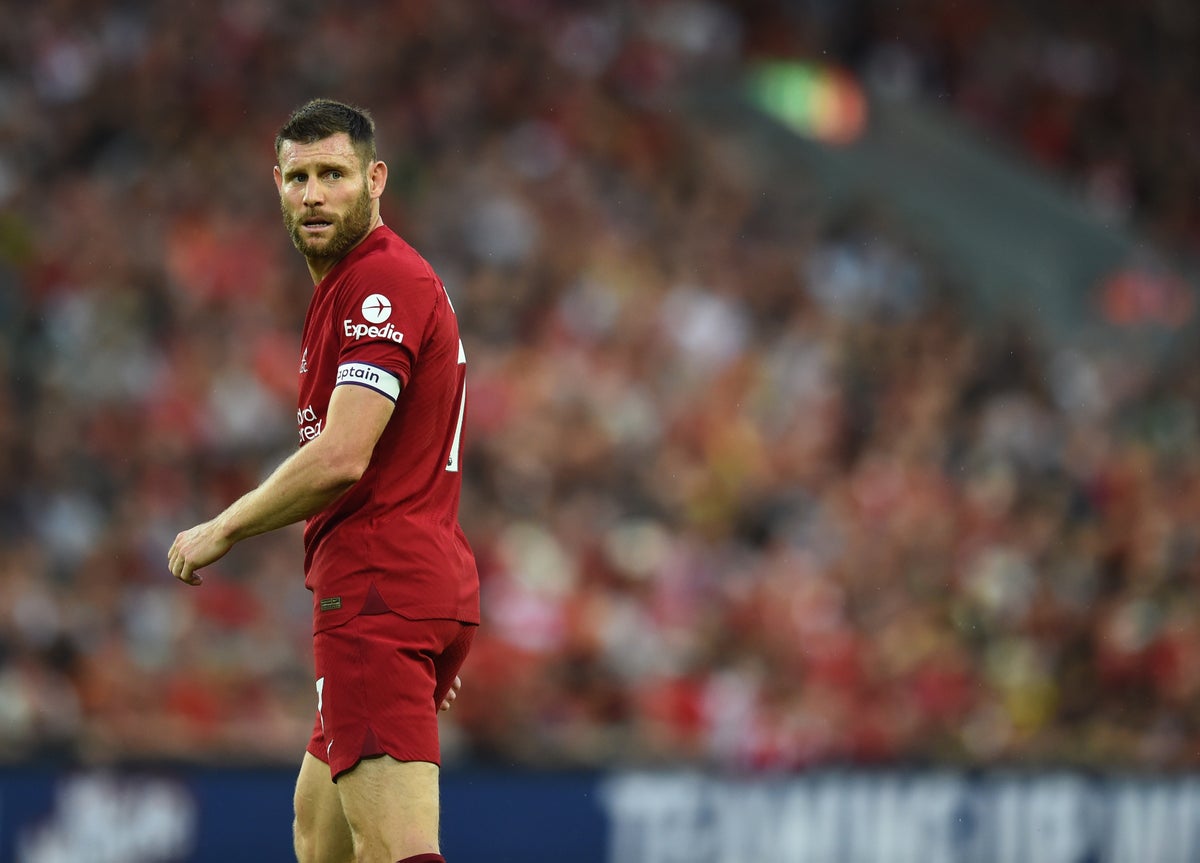
It is not often in recent years that Liverpool supporters have had reason to envy their Manchester United counterparts but Monday may have provided a couple. Erik ten Hag had two new midfielders on the pitch – Casemiro suited, Christian Eriksen booted and influential in the 2-1 win over Jurgen Klopp’s team. And if Casemiro’s £60m fee and huge four-year contract makes him precisely the sort of signing Klopp would not make, if Eriksen’s age suggested that he, too, would not have been on an Anfield shortlist, the more febrile part of the fanbase would welcome any addition in the centre of the park.
Liverpool do not operate like that. Klopp rarely compromises, preferring to wait for his first-choice targets, as he did for Alisson and Virgil van Dijk, even if that can create problems in the short term. He does not disguise his admiration for Jude Bellingham, who may be available in 2023. But he also tends to have belief in the players at his disposal and that has underpinned his reluctance to return to the transfer market.
If there are parallels with the decision not to buy a centre-back in 2020, which then cost them amid a flurry of injuries, there is a fundamental difference. Then Liverpool had three specialists for two positions. Rewind a couple of months and Klopp seemed to have nine options for the three midfield spots.
Now he has too many midfielders and too few. The faultlines in the nine have not just been apparent in a winless start to the Premier League campaign, but on the treatment table. If the quintessential Klopp players have formidable fitness records – think of Mohamed Salah, Sadio Mane, Andy Robertson, Trent Alexander-Arnold and, one cruciate problem apart, Van Dijk – too many of his midfielders are injury-prone.
Alex Oxlade-Chamberlain has become an afterthought amid his absences. Thiago’s ceiling in the last decade has been 42 club games a season, and Liverpool played 64 last season. The problem with possessing a unique talent is that no one replicates his role when he is missing and they have to factor in the probability he will sit out one in every three games. Naby Keita was supposed to be the most dynamic, but through a combination of selection and fitness problems, he has never played more than 41 per cent of minutes in a Premier League campaign. He has been sporadically excellent but an overall appraisal – if not Klopp’s more generous verdicts – may be that he has flattered to deceive and, in a curiosity of an Anfield career, it is odd Liverpool have not managed to extend the contract of a £52m signing who could leave for free. Now Curtis Jones has entered the cycle of injury after injury. At the other extreme, Jordan Henderson played 57 matches last season, but surely never will again.

The composition of the nine is both even and uneven. That Klopp has three youngsters, in Jones, Harvey Elliott and Fabio Carvalho, can explain a determination not to bring in someone who would be a roadblock to their ambitions. But there is a generational divide: James Milner, 37 in January, is buying Liverpool time ahead of a possible overhaul next summer when Milner, Keita and Oxlade-Chamberlain are all out of contract. The nine divide into three thirtysomethings, three 21 or under, and only three – including the oft-injured Oxlade-Chamberlain – in what are supposedly their peak years. Liverpool may have the past and the future but it invites questions about the present.
And the reality the young trio are all essentially attacking midfielders highlights an imbalance. Of the nine, only two, Fabinho and Henderson, really suit the holding role and the captain is also a first-choice No 8. It is why, for all the focus on Bellingham, Liverpool’s ideal midfield makeover would involve not one addition but two: another defensive presence would help bring the solidity they have lacked this season and Klopp’s decision to bench Fabinho at Old Trafford was odd.
All of which may be a roundabout way of saying that, a year after he left, Liverpool are missing the definitive Klopp midfielder. Gini Wijnaldum was never injured, invariably consistent and could fill all three roles. He rarely scored or assisted but he excelled in keeping the midfield running smoothly, in offering selfless support in a way that cut off counter-attacks, in retaining possession, covering gaps and facilitating others’ more eye-catching excellence.
The midfield is the most functional department of Liverpool’s side; since the departure of Philippe Coutinho, its most extravagant talent, it has been recalibrated in such a way that there is no equivalent of Kevin de Bruyne or Bruno Fernandes. Yet it attracts most attention when it does not function properly, when they do not have the requisite combination of chemistry, energy and tactical discipline, and Liverpool looked stretched at Old Trafford.
Wijnaldum was both the big-game player and the constant; he has been neither since he left, losing his place at Paris Saint-Germain and getting injured at Roma. Liverpool’s first year without Wijnaldum was two games from finishing with glory on four fronts. But while their attack has been overhauled in 2022, their midfield now looks in limbo, waiting for a 2023 of change.







